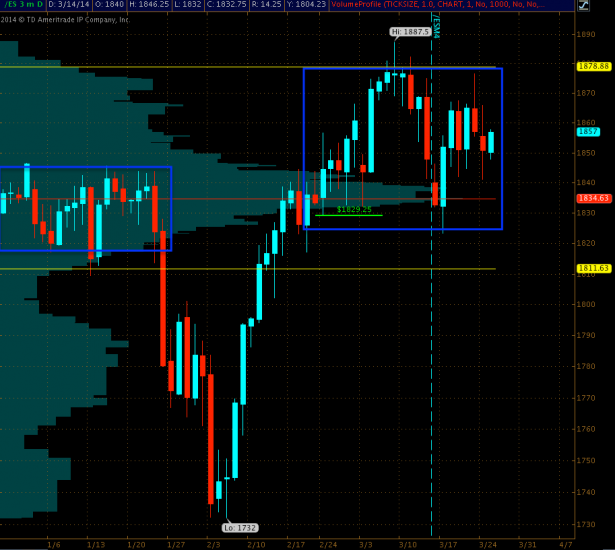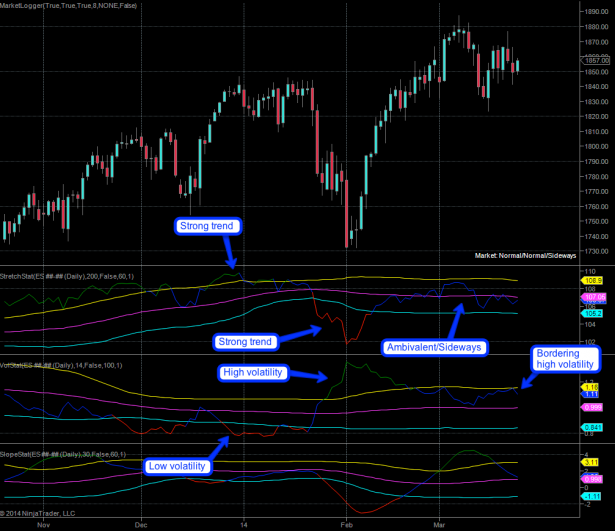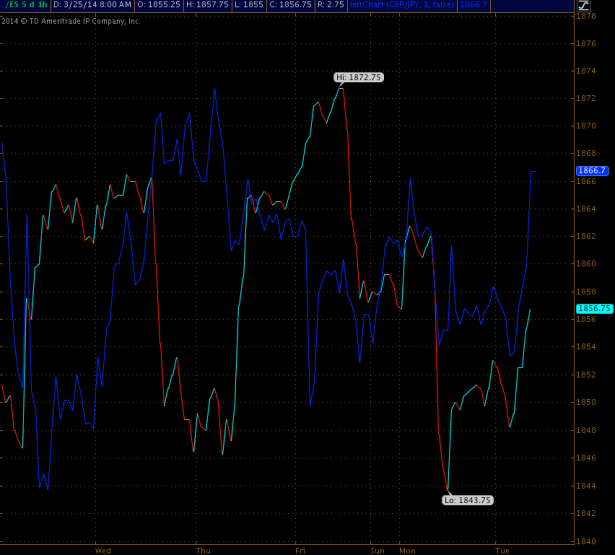Sailing Through Volatile Waters
Sailing Through Volatile Waters
If you were hoping for continuation of the previous day’s direction then you once again will be squarely disappointed this morning. We continue our journey through rather turbulent and volatile currents and I suggest you batten down the hatches.
I often talk about market weather and how important it is to adjust your trading activities to the present conditions. It’s really no different than choosing an outfit before leaving the house – you wouldn’t want to hit the road wearing shorts and a t-shirt when it’s 10 below zero outside. Of course instead of facing rain, snow, strong winds, or relentless heat in the market we mostly deal with volatility and trend – in combination there are several market types we need to be cognizant of. Here’s a pertinent passage of a recent post Scott wrote two weeks back:
- Another way of saying “choppy markets with lots of overlapping bars” is LOW VOLATILITY.
- Another way of saying “few overlapping bars” is RISING VOLATILITY.
- Sideways markets are INHERENTLY DIFFERENT from trending markets
- Low volatility markets (on a daily timeframe) make day trading harder and swing trading and position trading easier. Think about all the “day traders” who could not trade after the dot.com boom ended.
- In low volatility trending markets (like the low volatility melt up in the stock market the last few years) counter trend trades have a DRAMATICALLY LOWER chance of working.
- Extremes in both HIGH AND LOW VOLATILITY are unsustainable and indicate a market with the potential to change character
- Bull quiet markets last the longest time. Bear quiet markets last the shortest time and arguably it is not worth developing systems for these markets.
- The highest probability for market phase following a low volatility sideways phase is a high volatility trending phase
- The highest probability for market phase following a low volatility trending phase is a high volatility trending phase in the opposite direction.
I think this gives you a rough idea – guess what market period we are in right now?
This is again a plot of the E-Mini and in the panels below you see three indicators which I stole from Ken Long and which have become very handy to perform some sense of market classification (although all indicators are always lagging of course). The most important ones are stretchstat which simply measures trending direction and VolStat which converts ATR to a percentage of price, then adds a 100 period 1 standard deviation bollinger to it, to show in an objective sense whether volatility is comparatively high or low compared to the last 100 bars.
As you can see several combinations jump right out – in December we climbed in a strongly trending low volatility market. Those can be rather easy to handle if you are positioned right, especially if you are a trend trader. In January we switched to a strongly trending but high volatility market – that’s not unusual on the downside. I yet have to see a prolonged (meaning on a daily or weekly scale) low volatility strongly down trending market. Perhaps in 2007/2008 for a few days, but it’s the exception.
Which brings me to the period we’re in right now – we are bordering high volatility but the market direction has been effectively sideways for the past month. Of course our eyes see plenty of movement due to the volatility but we are no further from where we were at the beginning of this month and just a few handles above mid February. These types of markets (high volatile / sideways) are the most difficult markets to handle and market makers love them as participants get herded from one side to the other with plenty of opportunity for the wolves to jump on the strays.

If you recall from above – the highest probability for market phase following a low volatility sideways phase is a high volatility trending phase. If you look at the very first chart in this post then this becomes rather clear. Which is why I took that rather suspicious shooting candle short on the TF – I already earned my 1/2R and I’m less concerned with taking profits right now, instead my motivation is to catch the inevitable acceleration point into the next market phase.
The level of confusion is largely driven by the Forex side (the market’s dog with equities being its tail) and I’m seeing some rather wild swings on one of the popular carry trade pairs the GBP/JPY. All this screams to me – watch your six and keep your exposure limited.
And if you’re exposed on the EUR (or USD) side then you may want to be out in 2 hours from now as Draghi is scheduled to throw another market wrench into Forex (and probably equities).
A few short term setups below for my intrepid subs – please join me in the lair:

It's not too late - learn how to consistently trade without worrying about the news, the clickbait, the daily drama and misinformation. If you are interested in becoming a subscriber then don't waste time and sign up here. The Zero indicator service also offers access to all Gold posts, so you actually get double the bang for your buck.
Please login or subscribe here to see the remainder of this post.
Cheers,





















